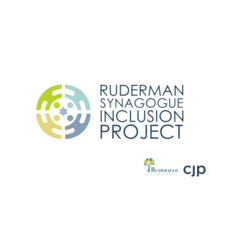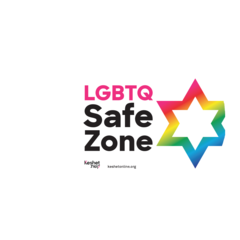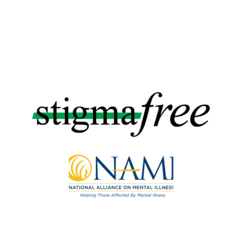Yom Kippur 2008
I remember temple shopping with my father back when I was in first and second grade. Would we join the Conservative or Reform congregation in Albany? My mother’s Eastern European immigrant parents spoke Yiddish, kept Kosher, and were strong Zionists, and my Zayde davened at a small Orthodox shul in downtown Albany, but Orthodox wasn’t an option for my agnostic father raised in Jewish but secular foster homes in the Bronx, whose three brothers had left Judaism when they married non-Jewish women. So when I began third grade, my parents joined Congregation Beth Emeth in Albany, the large classical Reform temple founded by German Jews, which had once had Isaac Meyer Wise as its rabbi. My mother’s sisters and brother all joined the Conservative temple. Although my maternal aunts and uncles jokingly referred to Beth Emeth as the church on
Academy Road
, it was the right place for my parents and me.
I went to Sunday school starting in third grade, and in tenth grade I was part of a Confirmation class of 72. Although I learned to read basic Hebrew, I did not have a Bat Mitzvah. A few of the boys at Beth Emeth had a Bar Mitzvah, just a small percentage of them, but Bat Mitzvah in the early 1960s in Albany had only been introduced in the Conservative synagogue. So it was my girl cousins at the Conservative shul who became Bat Mitzvah—although they were only allowed to read Haftarah on a Friday night. My mother offered to fight the temple powers-that-be if I wanted to study to be the first Bat Mitzvah at Beth Emeth, but I was a well-indoctrinated Reform Jew, and Confirmation was fine with me
As a teenager, I was active in the NFTY chapter at my temple. I also went to Friday night services a lot with my parents since my father, while still agnostic, really liked the peaceful atmosphere and the intellectually challenging sermons. My teenage rebellion to religion took the form of my self-righteously refusing to attend Kol Nidre services in eleventh grade since I was damned if I was going to be seen worshipping with all those women who came only once a year showing off their mink stoles. My parents wisely didn’t insist
Once I was away at college, I was involved off and on with the Hillel at Cornell, and I joined a sorority that was more than half Jewish. During graduate school at Brandeis, I started attending the wonderful High Holiday services led by Rabbi Al Axelrod, and I continued to come back to Brandeis for the High Holidays even after I had left graduate school, bringing Chuck with me once he became part of my life. We would go back to Albany for Passover Seders at my parents’ house, and in 1976 Chuck and I went to Albany to be married by the rabbi of the new Reform congregation in Albany, B’nai Shalom, to which my parents then belonged
The year that Brandeis announced that non-students and non-faculty were no longer welcome at High Holiday services, Chuck and I started to Temple shop. When we joined Isaiah in 1981, we lived in Stoneham and I was newly pregnant with Sarah. The following spring, Rabbi Yales officiated at Sarah’s baby naming. Since Chuck and I had both grown up with services where the music was experienced as spectators, we were both relieved to find that at Isaiah congregants participated in singing along. Chuck, who had grown up in a Cleveland suburb in an even more classical Reform temple than Beth Emeth, wanted to learn to read the Hebrew he had never been taught as a boy, and TempleIsaiah had classes. I tagged along to refresh my very rusty Hebrew, which dated from fourth and fifth grades. Then just before Sarah began kindergarten, we moved to Lexington, in part to be closer to the Temple and all the friends we had made here
It was during Family Connection parent study sessions at which we discussed how we would talk about God with our children that I had to come to terms with my own doubts about the existence of the sort of God described in Torah. I had had all sorts of late night discussions about theology and philosophy during my college years—I was educated as a scientist, after all, and I then taught science and edited science textbooks—but for quite a few years I had simply put deep thoughts aside. After my return, so to speak, during Family Connection to the process of soul searching, I came to realize that what I believed in was a divine power that worked through the laws of Nature, that I felt a humbling sense of awe at the wonders of life and the universe, and that I felt comfortable describing my relationship to all human beings as all of us sharing a divine spark. My beliefs probably sounded rather fuzzy, but it was enough that I was able to use the God-word to teach my daughter and to tell her that we must value the humanity of every person in the world because we are all children of Adam and Eve with the breath of God in each of us
For many years, I had also chosen to not to think too closely about how the prayer book apparently heaped lavish praise on a miracle-working God, when I really didn’t think there was any supernatural figure who listened personally to my prayers. And besides, why would God want or need our flattery? In fact, when I started attending Saturday morning Minyan services about twelve or fourteen years ago, I was almost pleased to be able to pray more in Hebrew than in English. I could read the Hebrew phonetically, but I didn’t understand most of it, and so I could avoid the bother of thinking too closely about specific words while letting the melodies and Hebrew sounds raise my spirit. Plus I enjoyed the weekly discussion of the Torah portion and the feeling of closeness of the Minyan community enough to put up with being troubled by the liturgy
Once I retired from the paid workforce more than nine years ago, one of the first things I knew I wanted to do was to study Judaism more. I started attending the Sisterhood Thursday morning classes with the Rabbis, and I signed up for the Me’ah program. Then after Chuck also took two years of Me’ah, we signed up for the Me’ah Graduate Institute. It was thrilling to be struggling with Talmud and other rabbinic texts, knowing that women were traditionally not taught Talmud and also knowing that a couple of generations back very few lay people in the Reform movement, whether male or female, studied any Jewish texts in depth. I was excited to be able to learn more about the Jewish textual underpinnings of the social justice work I had always felt compelled to engage in. And one of the best parts of studying Talmud was seeing how the ancient Rabbis has disagreed with each other but how both the majority opinions and minority opinions were recorded—and then how the different views were taken seriously in subsequent discussions by later generations of Rabbis. I was also able to see how the teachings of Torah were probed and embellished and turned over and over by Jewish scholars for hundreds and hundreds of years, and that helped me put my own doubts and skepticism into the context of a long tradition of questioning and debate
In the semester of Me’ah in which we were introduced to medieval Jewish literature by Rabbi Meir Sendor, I was exposed to beautiful poetry and philosophical ponderings that I had barely known existed, and which showed me that medieval times were not at all the Dark Ages for Jewish thinkers. As part of Me’ah Grad Institute, I took a wonderful semester on Maimonides with Rabbi Benji Samuels, glad to have a good teacher’s help with Maimonides’ perplexing and challenging Guide for the Perplexed. Two other Me’ah Grad Institute classes also gave me a taste of the writings of the Jewish mystics—the Kabbalists and the Chasidic masters. I realized that the mystics were wild and crazy guys in how far they would stretch in their attempts to approach the divine and describe it, and I also learned words like transcendence and imminence, which I felt I could use to describe my views of the divine
After four years of Me’ah, I decided that I wanted to be able to read biblical texts in the original Hebrew. I had always been fascinated during Minyan discussions when the rabbi pointed out that the Jewish Publication Society’s translation of a Hebrew word in Torah might not be the only way to translate a passage. So I took two and a half years of Biblical Hebrew with my teacher and friend Mickey Khazam. Of course as I learned to translate Hebrew, I could no longer ignore the meaning of the prayers as I had when I let the waves of Hebrew flow like a mantra through me during services. However, I discovered that as I had matured, I was becoming a lot more comfortable with metaphors. I can say that all of us are made b’tzelem elohim, in the image of God, although I do not believe in an anthropomorphic God. And I now find that I appreciate the liturgy of the prayer book without having to take it too literally. It has also been fun to be able to poke Chuck in the ribs during services and whisper that the prayer book’s translations don’t match the Hebrew in places. But best of all, I can sit down with a book of Torah and my Hebrew-English dictionary and proudly translate each verse slowly but surely. If you want to find me on most Thursday mornings, you can look in the kitchen of my friend Lynne Fisher, where we work together through the Hebrew of a piece of the Torah portion of the week
As for the Bat Mitzvah I never had at age 13, I have read from the Torah scroll at Saturday Minyan two or three times in the last few years and I intend to volunteer to do it again. I continue to enjoy the discussions in Minyan of the provocative questions that Rabbi Brown asks us to consider as we focus on specific Torah verses each week. I say this even though I still don’t think that God is anything like the one described by my ancient ancestors in the Torah and even though I firmly believe that the Torah had several different human authors, some writing as late as the return from the Babylonian exile. In other words, I believe that the Torah is not a record of what God said but of what Jews have said about God—and that in itself is valuable to me
I also know now at the age of 61 that I need to pray—even though I still don’t think that anyone is listening to me. I particularly look forward to the Silent Prayer each service. It is in the very act of expressing my hopes and my fears and admitting that there is so much out of my control that makes prayer a meaningful experience—and I hope that by praying I will become a humbler and more accepting person as well as a person who will get up from prayer more willing and more determined to act in whatever way will make the world a better place for my family and the larger community.





